On This Page
Summarise this article using AI
Introduction
Are you experiencing red, tiny bumps or itchy rashes on your skin after just a short time in the sun?
Do these symptoms appear primarily in spring or early summer when your skin is first exposed to sunlight?
Do your children come home after school with redness, itching, and skin rashes after being in the sun?
If so, you might be dealing with a common sun sensitivity disorder known as Polymorphous Light Eruption (PMLE), where the skin reacts abnormally to ultraviolet (UV) rays.
Polymorphous Light Eruption (PMLE) is a delayed, recurrent, and abnormal reaction to the sunlight.
It is the most common photo-dermatitis in school-going children, and females with age between 20- 30 years.
In the United States, 10- 20% of the general population suffers from PMLE as per the research.
Ayurveda offers a safe and natural way to calm these flare-ups. At IAFA®, Dr. Sahil Gupta (B.A.M.S., M.H.A.) has been helping patients with PMLE conditions for over 15 years, using Ayurvedic detox and herbal care to restore skin balance and prevent recurrence.
History of Polymorphous Light Eruption (PMLE)
This disease was first known as Solar eczema by Robert Willanin in 1817, and in 1942, abstain described it as Prurigo Aestivalis. Carl Raschin was first, in 1990, to give the term Polymorphous Light Eruption (PMLE) to Eczema Solare.
The exact cause of Polymorphous Light Eruption (PMLE) is unknown but is mostly seen in individuals who live at higher altitudes than the sea level.
Patients of PMLE experience various symptoms like Erythema, Erythematous Papules, Papulo Vesicles, and plagues. PMLE usually affects those areas of the body with discomfort and irritation that are not regularly exposed to sunlight.
In Ayurvedic classical texts, Polymorphous Light Eruption occurs because of aggravation of Pitta Dosha, especially Bhrajaka Pitta, which is responsible for skin health.
What is Polymorphous Light Eruption (PMLE)?
The word polymorphous in the disease PMLE refers to different shapes of rashes erupts when exposed to UV Light.
Polymorphous Light Eruption (PMLE) is the most common sun-induced skin problem caused by an abnormal immune reaction to sunlight.
After exposure to sunlight or artificial UV rays, a delayed hypersensitivity reaction occurs in the body. The reaction causes itchy skin, rashes, small bumps, and blisters.
Ayurveda Views on Polymorphous Light Eruption (PMLE)
As per Ayurveda, Polymorphous Light Eruption (PMLE) can be co-related to an imbalance of Pitta Dosha in the body, specifically Bhrajaka Pitta, which governs skin health.
Along with this Ayurvedic skin condition Vicharchika, Pittaja Sheeta Pitta can also be correlated with Polymorphous light eruption.
PMLE resembles the above-mentioned condition where the skin becomes intolerant to sunlight, specifically UV light becuase of compromised immunity.
Other factors that can exaggerate the PMLE are animal dander, extreme heat, extreme cold, mold, anxiety, and chronic stress.
1. What is Bhrajaka Pitta?
There are three fundamental energies known as Tridosha in Ayurveda, which govern all physiological (Sharirika) and psychological (Mansika) functions of the body, i.e., Vata, Pitta, and Kapha.
Pitta has five sub-types, and Bhrajaka Pitta is one of them.
Bhrajaka Pitta is the governing force of skin metabolism. Bhrajaka Pitta is responsible for your skin complexion, regulating temperature, and responding to various external stimuli like sunlight, and heat.
2. How Does Bhrajaka Pitta Affect Individual Skin?
When Bhrajaka Pitta is aggravated in your body, it leads to various skin disorders such as Pittaja Sheeta Pitta.
Excessive sun exposure leads to Bhrajaka Pitta imbalance due to over UV rays exposure casusing redness, and irritation in the skin.
Bhrajaka Pitta imbalance may also lead to hyperpigmentation, and skin inflammation.
3. What is Bhrajaka Pitta Role in Polymorphous Light Eruption (PMLE)?
When you come under direct sun or UV rays, your body overreacts because of imabalanced Bhrajka Pittaand leads to immune hypersensitivity.
This hypersensitivity causes delayed inflammatory response in which development of papules, vesicles, redness, and itching occur.
What is the Difference Between Sun Allergy and Polymorphous Light Eruption (PMLE)?
The key difference between Sun Allergy and Polymorphous Light Eruption (PMLE) is that the ‘Sun allergy’ is a broader term which includes different allergies to sunlight like solar urticaria, and PMLE.
Whereas PMLE is one of the types of sun allergies where individuals’ immune system reacts abnormally to the sunlight specifically UV rays and results in red, itchy papules, plaques, etc.
Another key difference is that sun allergies can occur immediately or after some time of sun exposure whereas PMLE usually appears after hours or days spent on major sun exposure.
What is the Difference Between Solar Urticaria and Polymorphous Light Eruption (PMLE)?
You may think of solar urticaria and PMLE the same, but both are different in onset and nature.
Solar urticaria is an immediate allergic reaction that occurs within minutes after exposure to sunlight and resolves within hours as well.
Whereas PMLE is a delayed hypersensitivity reaction that is persistent and occurs after hours, even after several days of exposure to the sun.
What is the Difference Between Lupus Erythematosus and Polymorphous Light Eruption (PMLE)?
The main difference between lupus erythematosus and Polymorphous Light Eruption (PMLE) is photosensitivity.
Lupus erythematosus is an autoimmune disorder with multiple organs involved, whereas PMLE is a localized skin condition.
Lupus erythematosus-related photosensitivity can cause butterfly rash to occur with systemic inflammation affecting organs like the skin, joints, kidneys, and even brain.
Whereas in PMLE itchy red papules occur without affecting multiple organs.
Who Gets Affected by Polymorphous Light Eruption (PMLE)?
- Individuals who live in high-altitude areas above sea level are affected by these PMLE diseases.
- Individuals with skin have less protection against UV radiation naturally due to low melanin
- Fitzpatrick skin types I to III
- School-going children and individuals going on vacation who suddenly get exposed to intense ultraviolet radiations
- Individuals who spend very little time in sunlight and suddenly got exposed to sunlight
- Individuals with a family history of PMLE
- If you live in area where sunlight suddenly increases after winter, during the spring season or early summer, you have higher chances of getting PMLE rash.
How Common is Polymorphous Light Eruption (PMLE)?
According to a recent survey, approximately 10- 20 % of individuals globally suffer from Polymorphous Light Eruption (PMLE).
Globally, the prevalence of polymorphic light eruption varies as affected individuals may experience PMLE every time they are exposed to sunlight or only occasionally.
PMLE is more common in Northern Europe, because around 15% in the UK than in 5 % in Australia.
A recent survey revealed that in 75 % of females, PMLE begins at the age of about 20- 40 years, but exceptions are there.
People living at a higher altitude than sea level experience PMLE more than people living at sea level.
The prevalence of PMLE is approximately 0.56% in India, and first-degree family members are around 20.9%, which shows its relation with genetic predisposition and family history.
Types of Polymorphous Light Eruption (PMLE)
Depending upon the individual response to sun exposure, severity, and symptoms, PMLE is of the following types:
- Papular Type Polymorphous Light Eruption: Papular PMLE is the most common form with symptoms like small, red, itchy papules or bump formation after a few hours of exposure to the sun. You can see red bumps in the chest, arms, and neck.
- Plaque Type Polymorphous Light Eruption: In this type of PMLE instead of small red bumps, large, red patches or plaques that are raised appear and that can be itchy, inflamed, and resemble an allergic reaction.
- Erythematous Polymorphous Light Eruption: No prominent plaques are formed but you get redness and inflammation in the affected area which looks like sunburn.
- Vesicular Polymorphous Light Eruption: The PMLE type in which small pustules or fluid-filled blisters on the skin that are severe and cause discomfort to you.
- Lichenoid Polymorphous Light Eruption: This is a rare type of PMLE in which purple or brown flat-topped papules along with scaling and itching appear, which resembles lichen planus.
- Hemorrhagic Polymorphous Light Eruption: This hemorrhagic PMLE is a very severe type in which blood-filled blisters appear on the skin.
According to Clinical Variation, PMLE eruptions are the following types:-
- Juvenile Spring Eruption: Juvenile skin eruption is a type of PMLE that mainly affects young boys when they are exposed to skin after the winter, particularly in early spring when they are first exposed to sunlight. In this type, papules are formed that are red, causing itching, and most of the time, appearing on the ears.
- PMLE Sine Eruption: In the Sine eruption type of PMLE skin lesions are not formed and only exhibit symptoms like itching or burning sensation. It is the rare form and making diagnosis of this type of PMLE is difficult as there are no papules or blisters, etc.
- Persistent PMLE: Persistent PMLE is a chronic form of PMLE which persists throughout the year even if the sun is avoided by the individual in the whole summer.
- Hutchinson’s Prurigo (Actinic Prurigo): This type is mostly seen in North and South America population. Hutchinson is a severe and chronic form in which papules with intense itching are formed on the face, lips and arms.
- PMLE in Dark-Skinned Individuals: As mentioned earlier, Fair skin individuals with type I to Type III are more affected by PMLE. This type occurs in dark skin tone individuals with symptoms like large papule formation and hyperpigmentation in the affected area.
Causes of Polymorphous Light Eruption (PMLE)
Modern Aspect
- Due to abnormal immune response to sunlight
- Family history of sun allergy
- Fair skin
- Sudden sun exposure
- Weak skin barrier due to sensitive skin or use of excessive chemical-based cosmetics.
- Hormonal imbalance in women like imbalance of estrogen and progesterone
- Deficiency of Vitamin D
- Deficiency of antioxidants
- The use of certain medications like diuretics, NSAIDs, and retinoids can increase sun sensitivity.
PMLE Causes As Per Ayurveda
PMLE mainly occurs due to aggravated Pitta, especially Bhrajaka Pitta so the causes of PMLE are the factors that aggravate Pitta:-
- Fair skin (Gour Varna)
- Excessive sun exposure (Atapa Sevana)
- Intake of excessively hot and spicy food (Ushana Tikshna Aahara Sevana)
- Intake of incompatible food (Viruddha Ahara)
- Weak digestive fire (Mandagni)
- Irregular sleep patterns (Ratri Jagarana and Diwa Swapana)
- Excessive stress and anger (Mansika Nidana Krodha, Chintan)
- Intense exercise or physical activity in the sun (Ati Shrama)
- Exposure to hot climate and wind (Ushana Anila)
At IAFA®, our goal is to work on the root cause and preventing flare-ups by addressing Bhrajaka Pitta imbalance, digestive fire (Agni), and individual triggers like stress or food.
How Does Vitamin-D Deficiency Contribute to Polymorphous Light Eruption (PMLE)?
A recent study suggests that Vitamin D deficiency plays an important role in the occurrence of PMLE.
As Vitamin D’s deficiency may lead to immune system dysregulation and increased inflammation and hypersensitivity when exposed to the sun.
Inadequate vitamin D in the body reduces skin tolerance to exposure to the sun and, upon exposure, leads to inflammatory reactions.
Vitamin D also helps in skin regeneration and repair and has antioxidant properties, so lower Vitamin D levels may lead to a weak skin barrier, increase oxidative stress, and make skin more sensitive to sunlight.
Paradox of Vitamin – D and Exposure to Sunlight in Polymorphous Light Eruption (PMLE)
Vitamin D deficiency is one of the causes of PMLE, therefore, exposure to the sun is needed to produce Vitamin D in the body.
But on the other hand, exposure to the sun triggers PMLE. So, it looks impossible to get Vitamin D without worsening the condition.
In this situation, you need alternative ways to get Vitamin D –
- Use of fortified dairy products
- Eggs
- Fish
- Controlled sun exposure in non- peak hours for 2-4 minutes
- Phototherapy treatments.
Symptoms of Polymorphous Light Eruption (PMLE)
Modern Aspect
- Papules, vesicles, or blister formation and, in severe cases, fluid-filled and blood-filled blisters are formed.
- Burning sensation
- Edema
- Redness
- Itchy rashes
- Delayed skin reactions
- Non-exposed areas of the skin to the sun remain unaffected
Symptoms of PMLE As Per Ayurveda
- Papules or blister formation (Pidaka)
- Burning sensation in the area affected by the sun (Daha)
- Inflammation and redness (Raga)
- Excessive sweating (Ati Sweda)
- Itching (Kandu)
- Sensitivity (Sparsha Ashatava)

Sun rashes that come back year after year?
At IAFA®, Dr. Sahil Gupta (B.A.M.S., M.H.A.) brings personalized Ayurvedic care to calm PMLE and prevent it from reoccurring.
Book your consultation with Dr. Gupta today for natural, root-cause healing.
– Dr. Sahil Gupta (B.A.M.S., M.H.A.)
Ayurvedic Allergy Specialist
CEO & Founder of IAFA®
Why Has Polymorphous Light Eruption (PMLE) Delayed Reaction After Sun Exposure?
In PMLE, symptoms appear hours to many days after sun exposure, and the reasons for delayed reaction are as follows –
- After exposure to the sun, DNA of skin cell gets damaged. To repair this, the body starts an inflammatory process with cytokines like TNF-alpha and IL-6, which takes time to build up hence reaction delayed. That causes mast cell hyperreactivity, connective tissue abnormalities, etc.
- PMLE is type IV hypersensitivity reaction, which is delayed type and involves T- cell activation which takes time to recognize and attack.
Diagnosis of Polymorphous Light Eruption (PMLE) – As Per Ayurveda
As we know, PMLE involves an imbalance of Pitta, especially Bhrajaka Pitta, and the diagnosis of PMLE is made by a five-fold examination (Nidana Panchaka) in which causative factors are asked from the patient, manifested symptoms are noticed, and palliative and aggravated factors are diagnosed.
These 5-fold examination (Nidana Panchaka) includes –
- Nidana (Causative Factors) – Identifying the root causes as well as triggers of the disease.
- Purvarupa (Premonitory Signs) – Checking early warning symptoms that body shows before the disease fully manifests.
- Rupa (Clinical Features) – Analyzing visible signs and symptoms.
- Upashaya (Relieving/Aggravating Factors) – Observing which foods, medicines, or lifestyle activities improve or worsen the condition.
- Samprapti (Pathogenesis) – Understanding how the disease develops and spreads in the body.
Along with this body constitution analysis (Prakriti Pariksha), pulse diagnosis (Nadi Pariksha) to know the Pitta dominance in the individual is done.
Diagnosis of Polymorphous Light Eruption (PMLE) – As per Modern Science
Modern diagnosis method like photo testing, photo patch tests, and blood tests like Vitamin D, ANA test, and CRP to understand the root cause.
In rare cases, patient has to go for skin biopsy if above discussed diagnosis doesn’t give any solid reason of the disease.

Have A Health Issue?
Consult Online
- Dr. Sahil Gupta (B.A.M.S., M.H.A.)
Ayurvedic Allergy Specialist
CEO & Founder of IAFA®
At last, Easier Polymorphous Light Eruption (PMLE) Management

Trusted by
More than 90,000 Patients

Convenient
at-Home Treatments

9.2 / 10
Customer Satisfaction Score
Ayurvedic Treatment for Polymorphous Light Eruption (PMLE)
Dr. Sahil Gupta at IAFA Ayurveda, offers deep and effective Ayurvedic treatment for Polymorphous Light Eruption (PMLE) which includes various Ayurvedic procedures like detoxification therapies (Panchkarma), the use of various herbs, a Pitta-pacifying personalized diet, and external applications of paste (Lepa) mentioned in classical literature.
IAFA Ayurveda helps in balancing Bhrajaka Pitta (Pitta Sub-type) and also treats the vitiation of Rakta Dhatu, reducing sensitivity to sunlight or UV rays’ exposure.
Most patients see improved skin response within a few weeks when combining therapies with lifestyle tuning.
Book your consultation today and find long-term relief naturally.
1. Detoxification Therapy (Shodhana Therapy) for Polymorphous Light Eruption (PMLE)
1. Emetic Therapy (Vamana): In severe cases of PMLE where along with Pitta, Kapha is involved and presents symptoms like inflammation and pustular eruption emetic therapy is done which not only detoxify the body but modulate immune response and helps to manage PMLE related hypersensitivity.
2. Purgation Therapy (Virechana): The best treatment to treat PMLE is purgative therapy that is done with the help of various herbs to cleanse the blood, liver, and intestine to eliminate excess heat and toxins from the body. Purgation therapy reduces inflammation, increases antioxidant activity, etc. and helps in managing photodermatitis.
3. Bloodletting Therapy (Rakta Mokshana): With the use of various techniques like leech therapy (Jaloka Avacharana), the removal of impure blood is done from the body in bloodletting therapy. This therapy helps in reducing histamine release, inflammatory mediators, etc., thus useful for treating PMLE.
4. Medicated Buttermilk Therapy (Takra Dhara): In this therapy, continuous medicated buttermilk (Takra) is poured over the affected area for a certain period. Takra Dhara is the cooling therapy that reduces burning sensation, inflammation and due to lactic acid and probiotics present in them improve skin barrier function and has soothing effect on PMLE skin.
5. Topical Applications (Lepana): Various combinations of herbs are taken, their paste is formed, and are applied over the affected area like Chandana, Manjistha, Kumari, etc. This local application therapy helps to reduce PMLE symptoms through their anti-inflammatory, UV protective and antioxidant activity.
2. Herbs for Polymorphous Light Eruption Treatment (PMLE)
1) Herbs to be Used in Polymorphous Light Eruption Treatment
Herbs for the Polymorphous Light Eruption treatment includes Mandukaparni (Centella asiatica), Shigru (Moringa oleifera), Shatavari (Asparagus racemosus), Sindoori (Bixa Orellana), Punarnava (Boerhavia diffusa), Kushmanda (Benincasa hispida), Mehndi (Lawsonia inermis), Haridra (Curcuma longa), Manjistha (Rubia cordifolia), Neem (Azadirachta indica), Guduchi (Tinospora cordifolia), Manjistha (Rubia cordifolia), Lodhra (Symplocos racemosa), and Pitpapra (Fumaria indica).
2) Effective Properties of Herbs as per Modern Science
These herbs possess various active ingredient like beta-carotene, lycopene, and canthaxanthin, that possess antioxidant, anti-inflammatory, immunomodulatory properties.
That not only detoxify your skin but also moisturize it.
These herbs have Pitta pacifying properties which purifies the blood, lessen the burning sensation, itching, and reduce UV rays induced damage.
The ayurvedic herbs provide natural skin protection, which makes the Polymorphous Light Eruption treatment natural.
3. Home Remedies for Polymorphous Light Eruption Treatment
The best Polymorphous Light Eruption treatment (natural) is protecting skin from direct Sun light and use at least SPF 30 if you have to go out.
However, lets discuss 3 best home remedies for PMLE.
1) Aloe Vera
Aloe Vera has anti-inflammatory properties that may help soothe redness and irritation, and its regular use enhances overall skin health.
How to use
- Apply pure aloe vera gel to the affected areas to soothe and moisturize the skin.
2) Coconut Oil
Just like Aloe Vera, coconut oil also has moisturizing and anti-inflammatory properties that heal as well as protect your skin.
Make sure that you’re using only cold-pressed and organic oil which will not have any harmful affect on your body. Avoid using refined ones.
In fact, use extra virgin coconut oil to avoid any side effects on your sensitive skin.
How to use
- Apply organic and cold-pressed coconut oil to the rash.
3) Green Tea Compress
Green tea can be a great option to heal the rashes naturally.
Because green tea contains antioxidants and anti-inflammatory compounds, and aids in the natural treatment of PMLE.
Green tea may provide lasting relief from itching and inflammation.
How to use
- Boil green tea, let it cool, and apply it to the affected areas using a clean cloth or you can use cotton swab.
4. Gem Therapy for Polymorphous Light Eruption (PMLE)
As per Vedic Astrology, you can wear gem stones in Polymorphous Light Eruption treatment.
But you have to consult an astrologer before wearing. The astrologer will suggest you the most suitable gem stone as per your horoscope to get the maximum benefits.
However, astrological classics suggest that you can wear Pearl (Moti), Moonstone (Chandrakant Mani), Blue Sapphire (Neelam), Turquoise, and Aquamarine as per your natal chart if you are suffering from PMLE.
These stones help in soothing skin irritation, provide protection against sun sensitivity, and enhance skin healing.
Committed to Holistic Healing through Alternative Medicine Since 2008
5. Diet and Lifestyle Guidance for Polymorphous Light Eruption (PMLE)
According to Ayurveda, if your diet is correct, then medicine is of no use because a good gut is considered the basis of a healthy individual.
So, by giving attention to our daily diet, you not only get relief from the ongoing diseases, but also avoid the upcoming ones.
Let’s discuss some dietary and lifestyle guidelines that you can follow for Polymorphous Light Eruption treatment natural –
What to Do (Pathya) in Polymorphous Light Eruption (PMLE)?
- To avoid PMLE, stay hydrated, and take 2-3 liters of water every day.
- Include beta carotene, Vitamin A, C, E containing food like green leafy vegetables, carrots, nuts seeds, etc. in your diet.
- One should have dinner and sleep at the appropriate time (Ratricharya)
- Include lycopene-rich food in your diet.
- Vitamin D should be included in the diet by consuming vitamin D-fortified food, and fish.
- Apply cold potency herbal paste (Lepa) on the skin like sandalwood, and Lodhra.
- Yoga, meditation, and exercise should be done regularly. Wear clothes that are loose, cotton made and light in color.
What to Avoid (Apathya) in Polymorphous Light Eruption (PMLE)?
- Avoid heavy meals (Guru Bhojana)
- Avoid incompatible food (Virrudha Aahara)
- Intake of sour (Amla), spicy (Teekshan), and salty (Lavana) food should be avoided.
- Alcohol and smoking should be avoided.
- Fermented food should be avoided.
- Anger and anxiety (Krodha and Shoka) should be avoided.
- Avoid excessive use of cosmetics with harsh chemicals.
- Avoid hot showers.
6. Yoga Asanas for Polymorphous Light Eruption (PMLE)
You can do various Yoga Asanas like Sun salutation (Surya Namaskar), Lion pose (Simhasana), Legs up the wall pose (Viparita Karani Asana), Triangle pose (Trikonasana), Shoulder stand (Sarvangasana), Fish pose (Matsyasana), Deep breathing technique (Pranayama), like Sheetali and Bhramari Pranayama, and meditation in Polymorphous Light Eruption treatment natural ways.
These Yogic Asanas improve your blood circulation, detoxify the skin, enhance skin repair, reduce Pitta aggravation, reduce heat and skin irritation.
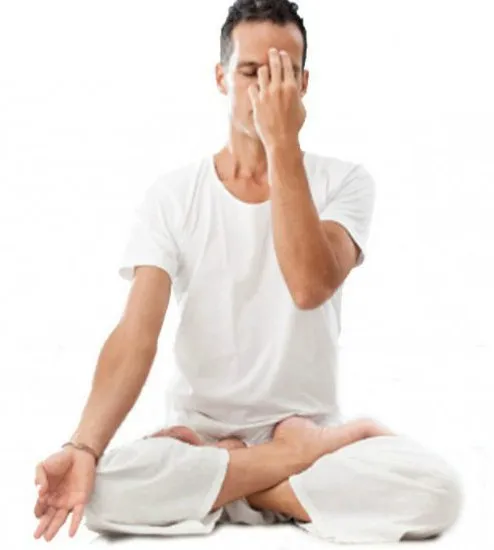
When to Consult an Ayurvedic Doctor
You should see Dr. Sahil Gupta if:
- PMLE flare-ups happen every spring or summer
- Symptoms resist home remedies
- You crave lasting balance not just short-term relief
At IAFA®, Dr. Gupta addresses PMLE at its root by resetting Pitta, detoxifying the body, and strengthening skin resilience.

Frequently Asked Questions
Que 1. How to Treat Polymorphous Light Eruption (PMLE) Naturally?
Ans. By avoiding excessive sun exposure, by applying various natural sunblocks like coconut oil, aloe vera, etc. and by wearing sun protective clothing, intake of various antioxidant rich foods like tomatoes, Amla and various cold potency herbs like Neem, Guduchi, etc. one can treat Polymorphous Light Eruption (PMLE) naturally.
Que 2. How Do You Get Rid of a Polymorphous Light Eruption Rash?
Ans. Apply local application paste (Lepa) of herbal powder like Chandana, aloe vera, etc. Intake plenty of water to stay hydrated, avoid direct sun exposure, and use anti-inflammatory herbs like turmeric, Giloye, etc. One can treat rashes due to PMLE. Cold compresses and soothing lotions like calamine or aloe vera gel.
Que 3. Which is the Best Cream for PMLE?
Ans. IAFA 333 cream is the best cream to use along with other Ayurvedic treatments for best results in PLME.
Que 4. How to Get Rid of PMLE Rash Fast?
Ans. Immediately with wet clothes, wipe the skin and apply fresh aloe vera gel. After that, apply paste (Lepa) of Chandana, Mehandi, Karpura, etc. on the affected area. Along with this oral intake of herbs like Haridra, Neem, Manjistha, etc. help to cure PMLE fast.
Que 5. Can PMLE Go Away on Its Own?
Ans. In most cases, PMLE without treatment resolves within a few days to a week, but avoidance of sun exposure is mandatory.
Que 6. What is Fitzpatrick Skin Type?
Ans. The classification used to categorize various skin types according to their reaction to the sun when exposed in terms of tanning, burning, etc., is known as the Fitzpatrick skin type. It categorizes skin into six types and Types I, II, III are at higher risk of having PMLE as compared to other three types as they have low melanin levels. Fitzpatrick skin type I, III have skin tone very fair, fair and light to medium skin, respectively.
Seek Expert Advice
If after sun exposure you experience recurring Polymorphous Light Eruption symptoms such as papules, itching, rashes, or redness, IAFA Ayurveda and its expert guidance can help you manage and prevent PMLE flare-ups effectively.
Dr. Sahil Gupta at IAFA Ayurveda offers personalized treatment for PMLE along with personalized dietary and lifestyle modification.
For Expert Consultation and Effective Polymorphous Light Eruption Ayurvedic Treatment, Contact Dr. Sahil Gupta at IAFA Ayurveda today.
References
- Balkrishna A, Singh S, Srivastava D, Mishra S, Sharma S, Mishra R, Arya V. A systematic review on traditional, ayurvedic, and herbal approaches to treat solar erythema. Int J Dermatol. 2023 Mar; 62 (3): 322- 336. Doi: 10. 1111/ ijd. 16231. Epub 2022 May 29. PMID: 35643- 834.
- Karthikeyan K, Aishwarya M. Polymorphous Light Eruption- An Indian Scenario. Indian Dermatol Online J. 2021 Mar 2; 12 (2): 211- 219. Doi: 10. 4103/ idoj. IDOJ-434- 20. PMID: 3395- 9517; PMCID: PMC- 8088173.
- Tutrone WD, Spann CT, Scheinfeld N, Deleo VA. Polymorphic light eruption. Dermatol Ther. 2003; 16 (1): 28- 39. doi: 10. 1046/ j. 1529- 8019. 2003. 01605. x. PMID: 1291- 9124.
- Gruber-Wackernagel A, Byrne SN, Wolf P. Polymorphous light eruption: clinic aspects and pathogenesis. Dermatol Clin. 2014 Jul; 32 (3): 315- 34, viii. Doi: 10. 1016/ j. det. 2014. 03. 012. PMID: 2489- 1054.
- Lew R, Jacob J. Polymorphous light eruption: a common skin disease uncommonly recognized in the Hispanic population. Oxf Med Case Reports. 2014 Nov 18; 2014 (8): 145- 7. doi: 10.1093/ omcr/ omu- 055. PMID: 2598- 8060; PMCID: PMC- 4369994.
- Puja Agarwal, HML Meena, Rashmi Mutha, Shinsha, Annu. An insight into Vicharchika and its management. J Ayurveda Integr Med Sci. 2024 Dec. 7 2025 April. 2; 9 (9): 68 – 74.
- Bansal I, Kerr H, Janiga JJ, Qureshi HS, Chaffins M, Lim HW, Ormsby A. Pinpoint papular variant of polymorphous light eruption: clinical and pathological correlation. J Eur Acad Dermatol Venereol. 2006 Apr; 20 (4): 406- 10. doi: 10. 1111/ j. 1468-3083. 2006. 01482. x. PMID: 1664- 3137.
- Schweitzer N, Gruber-Wackernagel A, Reginato E, Bambach I, Queen Berger F, Byrne SN, Wolf P. Levels and function of regulatory T cells in patients with polymorphic light eruption: relation to photo hardening. Br J Dermatol. 2015 Aug;173 (2): 519- 26. Doi: 10. 1111/ bjd. 13930. Epub 2015 Jul 30. PMID: 2603- 2202; PMCID: PMC- 4564- 948.
- Gruber-Wackernagel A, Obermayer-Pietsch B, Byrne SN, Wolf P. Patients with polymorphic light eruption have decreased serum levels of 25- hydroxyvitamin- D3 that increase upon 311 nm UVB photo-hardening. Photochem Photobiol Sci. 2012 Dec; 11 (12): 1831- 6. doi: 10. 1039/ – c2pp- 25188d. Erratum in: Photo- chem Photobiol Sci. 2016 Jan; 15 (1): 129. doi: 10. 1039/ c5pp- 90044a. PMID: 2295- 2008.
- Lugovic Mihic L, Bulat V, Situm M, Cavka V, Krolo I. Allergic hypersensitivity skin reactions following sun exposure. Coll Antropol. 2008 Oct; 32 Suppl 2: 153- 7. PMID: 1913- 8019.
- Ling TC, Dawe RS, Gardener E, Rhodes LE. Interventions for polymorphic light eruption. Cochrane Database Syst Rev. 2017 Oct 9; 2017 (10): CD005069. Doi: 10. 1002/ 1465- 1858. CD 005069.pub3. PMCID: PMC- 6485352.
- D’Souza, Zenica & Kt, Ayana. (2023). AYURVEDIC MANAGEMENT OF VICHARCHIKA: A CASE REPORT. International Journal of Research in Ayurveda and Pharmacy. 14. 1- 4. 10. 7897/ 2277- 4343. 140229.
- Lembo S, Raimondo A. Polymorphic Light Eruption: What’s New in Pathogenesis and Management. Front Med (Lausanne). 2018 Sep 10; 5: 252. doi: 10. 3389/ fmed. 2018.00252. PMID: 3025- 0845; PMCID: PMC- 6139- 322.
Was this Page Helpful?
IAFA’s Root-Cause Treatment for Polymorphous Light Eruption (PMLE) is Just 3 Steps Away!

01. Connect With Us
Share your history of illness or Book your appointment

02. Consult With Us
Dr. Gupta a certified Ayurvedic Allergist Consultant

03. Root Cause Treatment
Get an accurate diagnosis, medicines, diet & lifestyle change
Real Case Studies – Successfully Treated Patients
Real Case Studies of Successfully Treated Patients from All Around the World by IAFA Ayurveda®
-

32-Year-Old Female Patient Recovered from Chronic Urticaria and Leaky Gut Syndrome – A Case Study
This case study highlights the successful Ayurvedic treatment of chronic urticaria associated…
-

5-Year-Old Shih Apso Dog Recovered from Canine Peripheral Neuropathy – A Case Study
This case study presents a 5-year-old Shih Tzu-Lhasa Apso crossbreed dog (pet)…
-
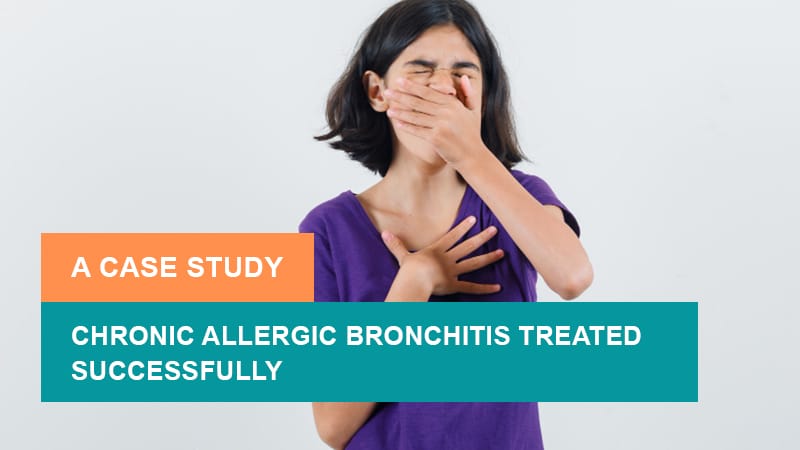
9 Year Old Female Patient Recovered from Chronic Allergic Bronchitis – A Case Study
This case study presents a 9-year-old female patient who has successfully recovered…
-
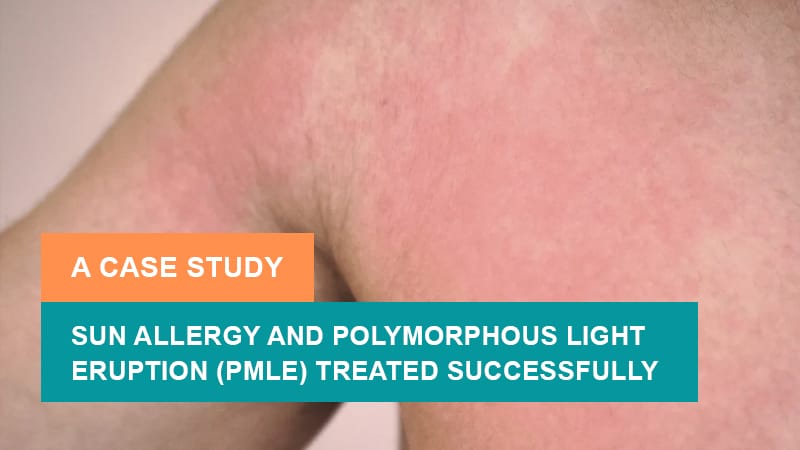
12-Year-Old Child Recovered from Sun Allergy and Polymorphous Light Eruption (PMLE) – A Case Study
This is a case study of a 12-year-old child who has successfully…
Read More Articles
-
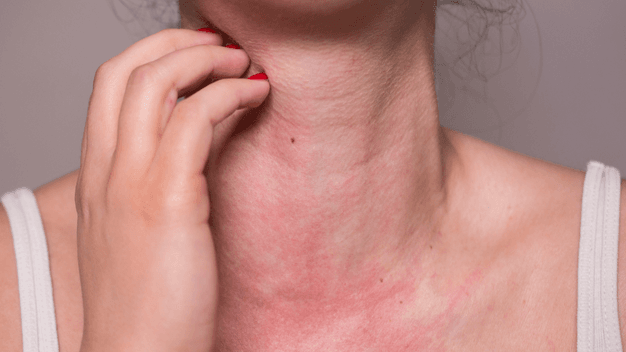
Polymorphous Light Eruption (PMLE)
Discover Ayurvedic treatment for Polymorphous Light Eruption (PMLE). Learn about its causes,…
-
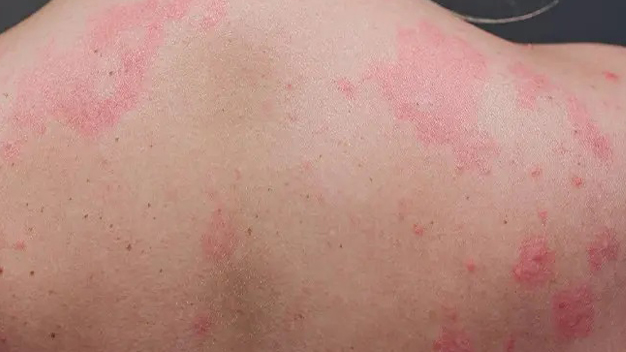
Mast Cell Diseases
Discover Ayurvedic treatment for Mast Cell Diseases, including types, causes, symptoms, and…
-

High Immunoglobulin-E (IgE) Levels
Discover Ayurvedic treatment for high Immunoglobulin-E (IgE) levels. Learn about the causes,…







